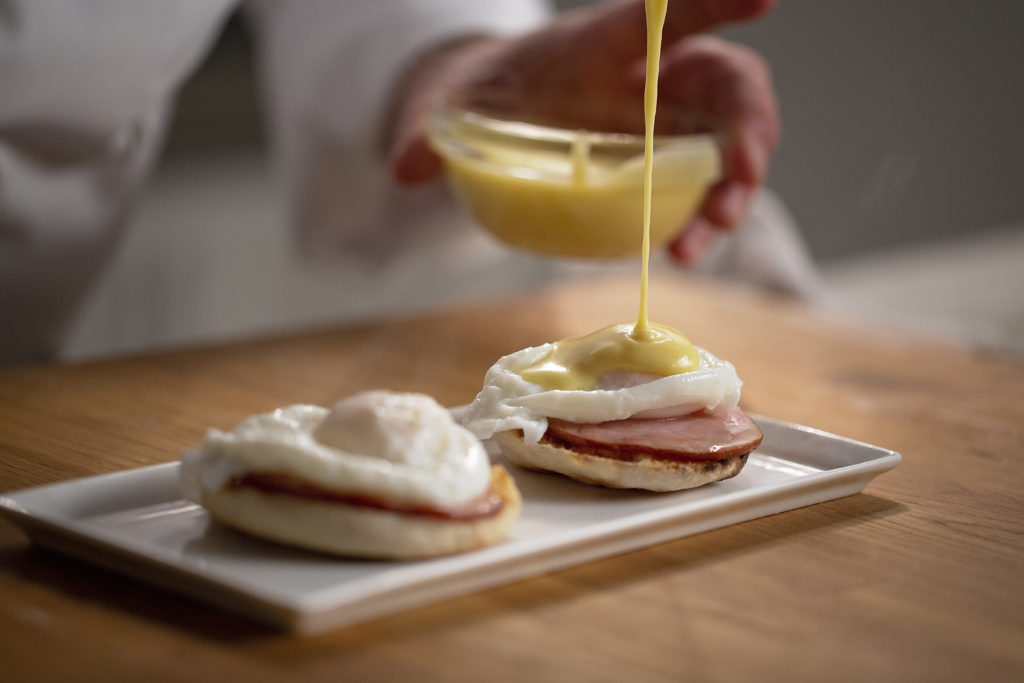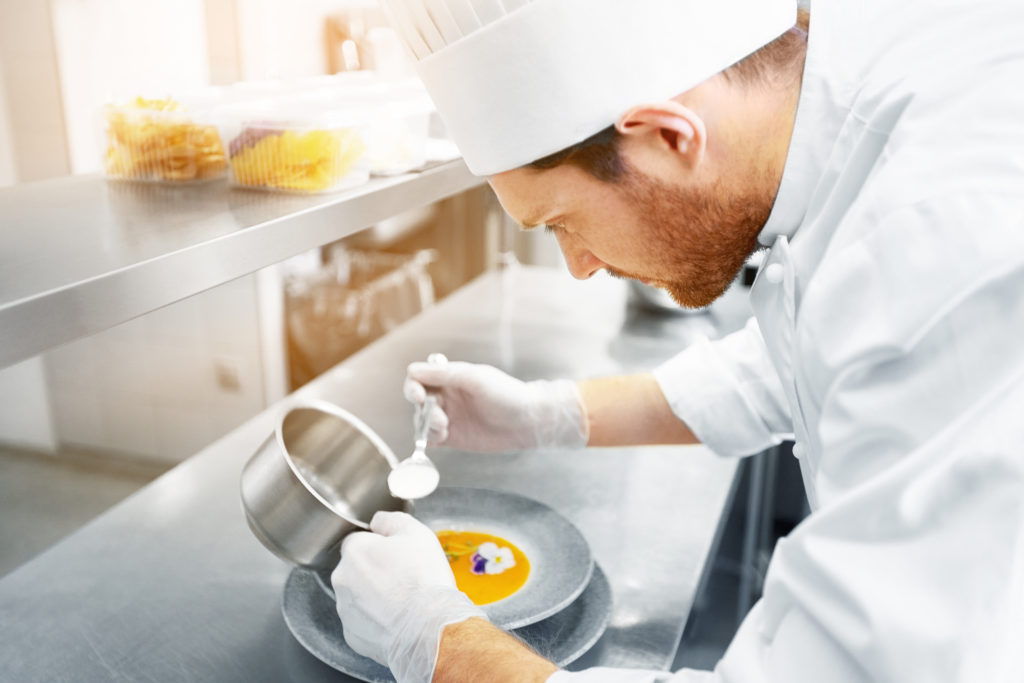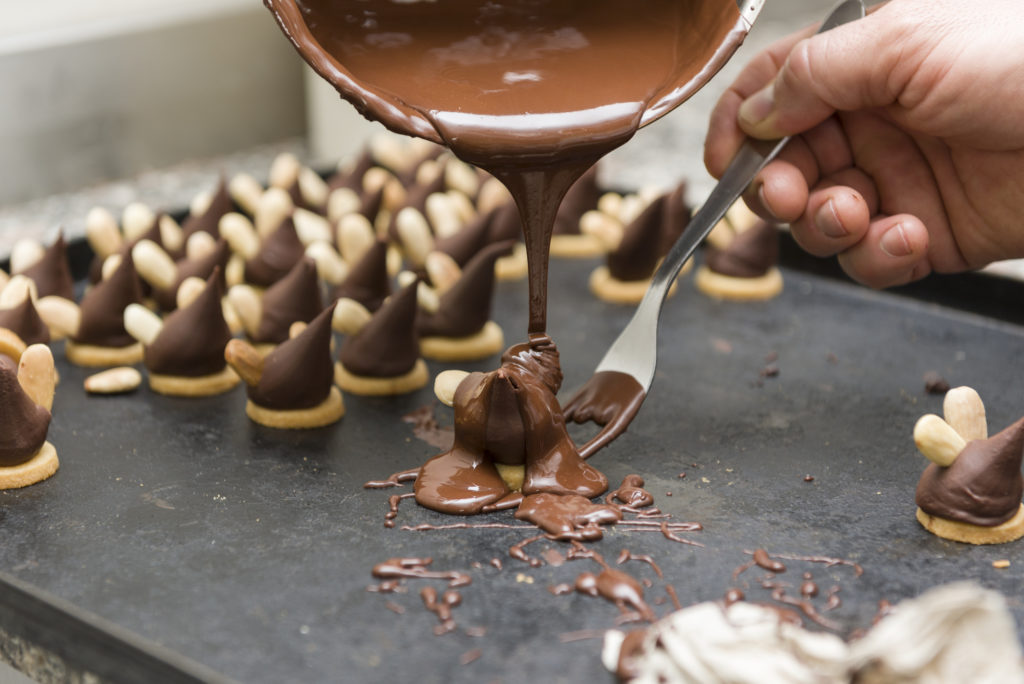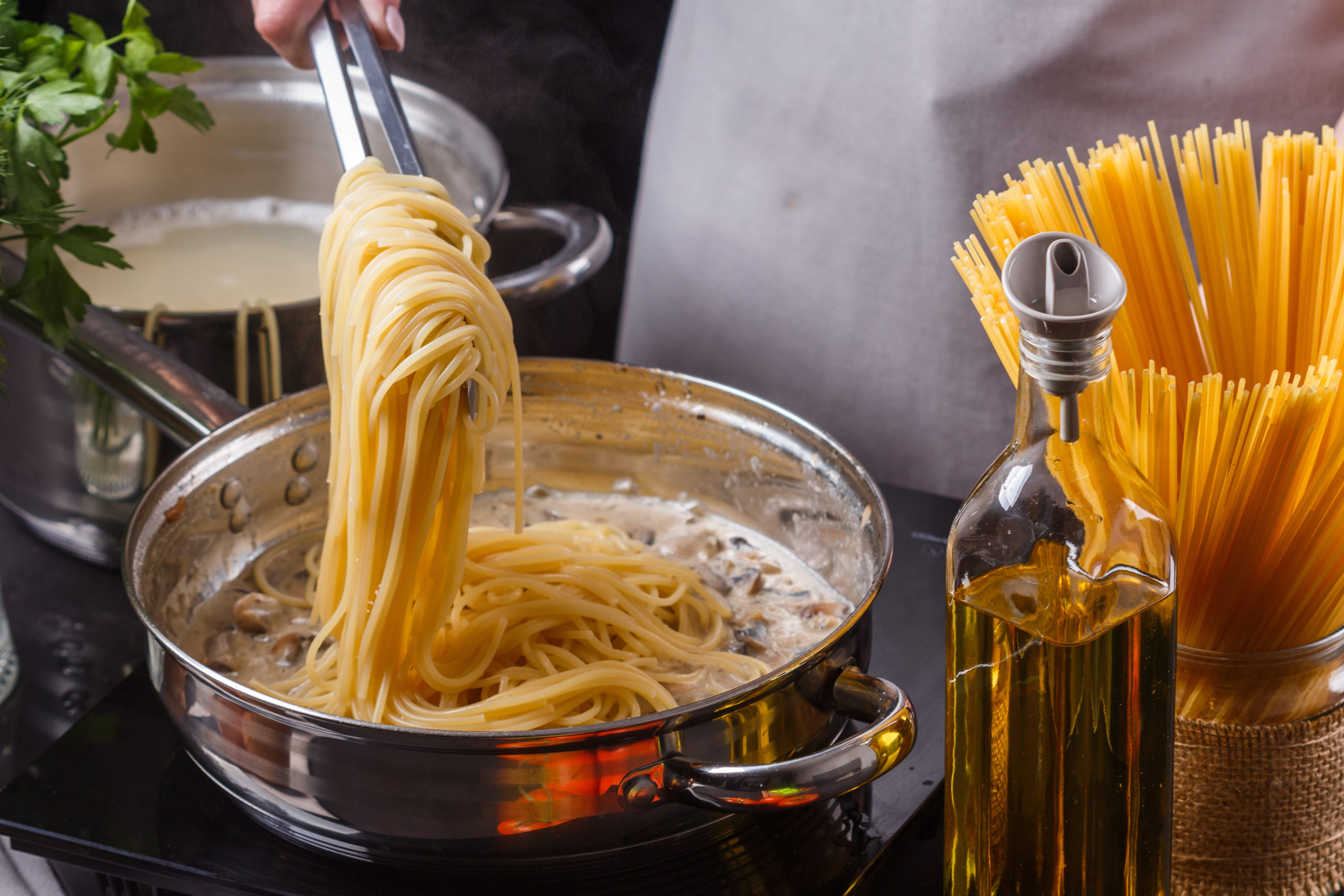Kitchen snafus happen to everyone, from the culinary school student to the professional chef. One minute everything is fine, and the next? Broken sauces! Improper seasoning! Clumpy chocolate!
With practice and experience, both amateurs and professionals can reduce the frequency of these mishaps, and know what to do to fix them. Here are quick fixes for four common kitchen disasters!
Fix a Broken Emulsion
An emulsion is a blend of two seemingly unmixable liquids, like oil and water or oil and eggs. By mixing these liquids vigorously, you can suspend one liquid inside the other. The resulting blend could be a sauce like a beurre blanc, a vinaigrette, or mayonnaise.
When the liquids separate back into their component parts, it’s called breaking. This often happens when an emulsion is outside of its temperature comfort zone. Vinaigrettes and mayos, for example, like to be cold. Hollandaise likes to be room temperature or warm — never hot or cold.

A creamy, unbroken hollandaise
To fix a broken vinaigrette, you can simply put it in a jar with a lid and shake the dickens out of it. But for a broken mayonnaise, we need a more delicate approach. This is the method recommended by Samin Nosrat, author of Salt, Fat, Acid, Heat:
- In a fresh bowl, add a tiny bit of very hot water, about ½ teaspoon.
- Start whisking vigorously, using the same whisk that you used for the mayo. It should have a bit of the oil and egg on it still. That, combined with the hot water, will be the start of your fixed mayo.
- Add your broken mayo just a drop at a time, whisking the whole time.
- By time you’ve added half the mayo back, it should be back to its creamy consistency.
Salvage a Salt Overload
Getting your seasoning right comes with time and practice. Under-salting is an easy fix — just add more! But over-salting is a little trickier to remedy.
One fix could be to add more unsalted ingredients to thin out the salt content and create balance. This could mean adding water or low-sodium stock to a soup or adding more rice to a jambalaya.
Another option is to increase the acidity to balance out the flavors. A splash of vinegar or dollop of sour cream could go a long way to fixing the extra salt.

Adding a creamy or acidic element can help balance too much salt
Another option is to change directions entirely. You may have intended that piece of over-salted meat to be an entrée, but it will be a tasty addition to a hash, pasta sauce, or soup. The extra ingredients will help to balance out the salty meat. Just remember to go easy on the salt as you’re cooking your replacement meal!
To prevent this problem in the future, Auguste Escoffier School of Culinary Arts students develop the habit of tasting as they go to create a balanced flavor profile. Instead of adding salt all at once, they’ll season gradually throughout the cooking process to make sure the salt enhances flavor instead of overpowering it.
Repair Seized Chocolate
Melted chocolate should be perfectly smooth and creamy, so it will pour evenly and have a glossy finish. But even a drop of water introduced into the melting pot can cause stiff, crumbly chocolate instead of a smooth melt. When this happens, your chocolate has “seized.”

Melted chocolate should be smooth, not gritty!
The solution, counterintuitively, is actually to add more water. You must add just enough boiling water to dissolve the sugar and cocoa solids. Add one tablespoon at a time, and stir vigorously.
This will change the consistency of the chocolate, making it thinner, so it may not be suitable for baking, if you’re working on a finicky recipe. Instead, you can use it as a chocolate sauce or a base for hot chocolate.
De-Stick Your Noodles
It’s endlessly frustrating to pour your lovely pasta strands into the colander — only for them to congeal into a sticky mess in seconds.
To prevent it from happening, start with a large pot with plenty of salted water. If your pot is too small, the temperature plummets when you add the pasta. In the time it takes for the water to get back up to a boil, the pasta is just sitting there and getting clumpy instead of jumping around in the bubbles.
Plus, less water means there will be a higher volume of starch in the water from the pasta, which can act like glue between your noodles.
When your pasta is done, don’t make the mistake of rinsing it under cold water. That will rinse the starch off the noodles and prevent your sauce from sticking. Instead, remove your noodles from the cooking water with tongs and add them directly to your warm pasta sauce. The oil in the sauce will cling to the pasta and help it come apart.

Add pasta directly to the cooking pasta sauce to prevent sticking
And reserve a bit of your pasta water! Starchy pasta water makes an excellent addition to a homemade sauce if it gets a bit thick when you add the noodles.
Learn The Science!
Understanding the science behind these common kitchen disasters can help you avoid them or fix them without starting from scratch.
At Auguste Escoffier School of Culinary Arts, students explore not just how to cook, but the science behind many cooking techniques.
Thinking about diving into your own culinary education? Start by learning about degrees and diplomas in Culinary Arts, Baking & Pastry, or Food & Beverage Operations.
Other articles about the culinary arts that you may find helpful:
- 4 Advanced Cooking Methods for Every Chef
- A Brief History of the Chef’s Uniform
- 5 Culinary Skills You Can Take With You Wherever You Go
This article was originally published on June 18, 2019, and has since been updated.



